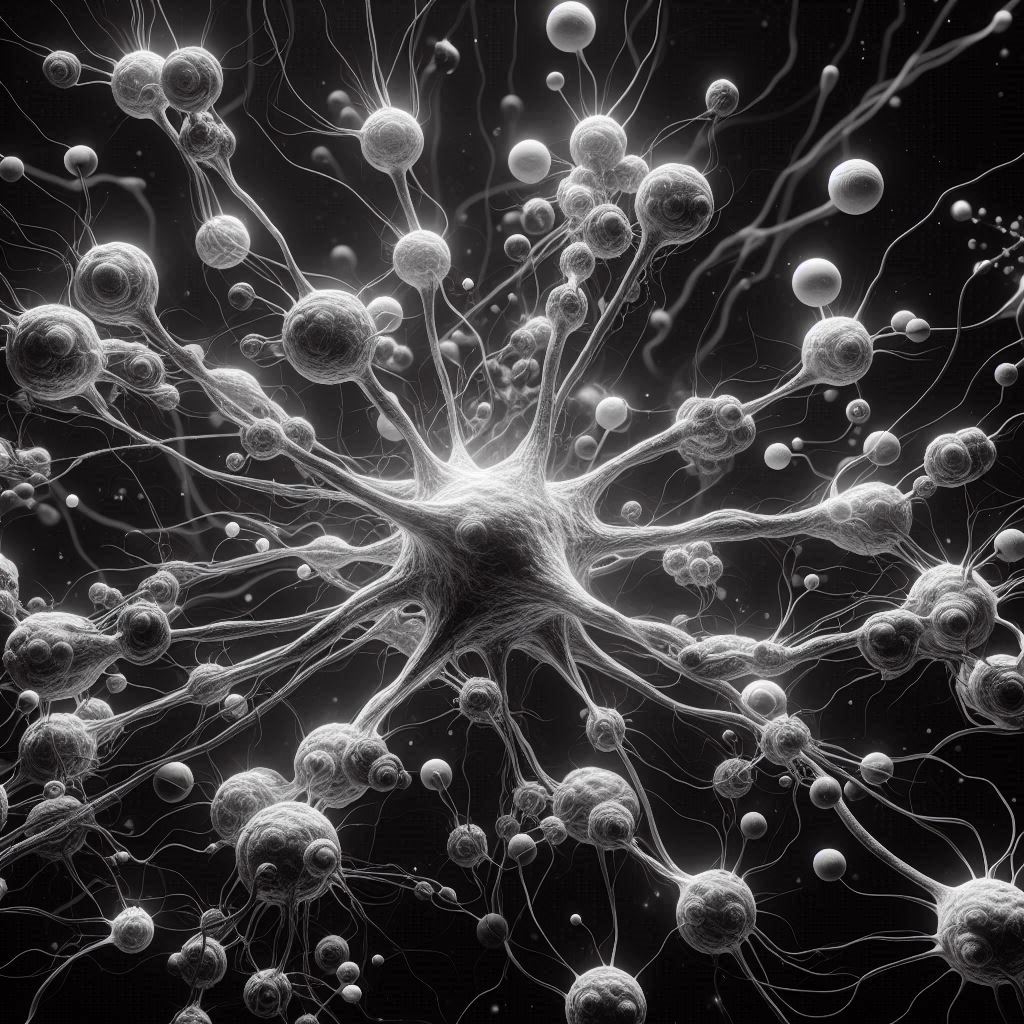Ever found yourself blowing up over something small, only to wonder what came over you? That’s emotional hijacking. Daniel Goleman’s work on emotional intelligence introduced this idea, showing us how emotions can override rational thinking.
This “hijacking” happens when the amygdala, the brain’s emotional epicenter, takes over, leaving logic in the dust. Recognizing emotional hijacking is crucial, not just for personal growth, but also for making smarter decisions. By understanding this phenomenon, we can learn to manage our reactions and improve our emotional intelligence. Ready to regain control? Let’s get started.
Definition of Emotional Hijacking
Have you ever reacted to a situation with intense emotion and then realized later that your response was out of proportion? This sudden override by our emotions is known as emotional hijacking. It’s a psychological phenomenon where our emotional brain takes control, often leading us to react impulsively. While it can happen to anyone, understanding its workings can help us manage these reactions better.
The Role of the Amygdala
The amygdala, a small almond-shaped cluster of nuclei located deep within the brain’s temporal lobe, plays a key role in emotional hijacking. Picture the amygdala as the brain’s emotional control tower. When faced with stress or threat, this part of the brain sounds the alarm.
- Instant Reaction Center: The amygdala is crucial for processing emotional responses. Unlike the rational thinking brain, it acts immediately to perceived threats. This means it can bypass logical reasoning and trigger the fight-or-flight response almost instantly.
- Hijacking the Brain: During emotional hijacking, the amygdala sends intense emotional signals that can overwhelm the brain’s rational thinking areas. It’s like an emotional storm that clouds clear judgment and reasoning.
Understanding the amygdala’s role helps us see why we sometimes act before thinking. Recognizing this can be the first step in regaining control over emotional responses.
Consequences of Emotional Hijacking
Emotional hijacking can have significant downsides, impacting both personal and professional aspects of our lives. Here are some of the potential effects to watch out for:
- Personal Relationships:
- Hurtful Words: In the heat of the moment, we might say things we don’t mean, causing unnecessary harm to loved ones.
- Impulsive Actions: Making hasty decisions based on feelings rather than facts can strain relationships.
- Professional Environment:
- Burning Bridges: Reacting emotionally in a work setting may lead to conflicts with colleagues or missed opportunities.
- Reduced Productivity: Constant emotional upheaval can distract from tasks, leading to decreased focus and efficiency.
Being aware of these consequences is essential. It encourages us to manage our emotional responses and foster healthier interactions in every area of our lives. Have you ever experienced a time when emotional hijacking impacted your decisions? Recognizing these moments can be empowering, helping you take steps to prevent them in the future.
Triggers of Emotional Hijacking
Emotional hijacking is like an emotional rollercoaster that takes over unexpectedly. One minute, you’re calm and collected, and the next, you’re responding in ways that feel out of your control. Understanding the triggers that can lead to this phenomenon is key in managing these intense reactions. Let’s explore some common triggers that may lead to emotional hijacking in our lives.
Stressful Situations
Stress is like a ticking time bomb. When we face overwhelming stressors, it’s easy for emotions to take the driver’s seat. Think about the time you had a pile of homework with deadlines looming, or faced a big presentation. The pressure mounts and sometimes leads to reactions that feel far from rational. Stress acts as a force multiplier for emotions:
- Fight or Flight: Our brain goes into survival mode, releasing chemicals that prepare us to fight or flee. This means thinking steps often take a back seat.
- Overwhelming Pressure: Whether it’s schoolwork, family responsibilities, or work deadlines, the weight can close in, triggering intense emotional responses.
By noticing these stress signals, you can take a breath and apply strategies to stay grounded.
Interpersonal Conflicts
Ever had an argument with a friend that spiraled out of control? Conflicts with others can stir up intense feelings and lead to emotional overreactions. Here’s why:
- Misunderstandings and Miscommunications: When words get twisted or misheard, emotions can flare up, leading to reactions before we even think.
- Past Grudges: Sometimes, unresolved past issues resurface during an argument, clouding judgment with old emotions.
Handling emotions during a conflict is tricky, but remembering to pause and reflect can prevent an emotional hijack.
Environmental Factors
The world around us can also trigger emotions without warning. Sometimes, it’s not just about what happens inside but what’s happening outside:
- Noise and Chaos: Ever notice how a noisy environment or chaotic setting can fray your nerves? Constant noise can feel like a whirlwind, disrupting your emotional balance.
- Crowds and Confinement: Being in a crowded place with little room to breathe can make you feel trapped, leading to stress-induced emotional responses.
Being aware of how your environment affects you can help you find ways to create calming spaces, so you’re less likely to be swept away by emotional waves.
By recognizing these triggers, you have the power to navigate through emotional hijacking with a clearer perspective. Emotions are a part of life, but they don’t have to take the wheel. What strategies do you use to keep your emotions in check when facing these triggers?
Recognizing Emotional Hijacking
Have you ever found yourself acting in a way that seems out of character, swept up in a whirlwind of emotions? If so, you may have experienced what’s called emotional hijacking. This phenomenon occurs when emotions take the driver’s seat, overriding logical thinking and leading to impulsive actions. But how can you tell when you’re caught in this emotional storm? Let’s break it down into physical symptoms and behavioral changes.
Physical Symptoms
First things first, our bodies are like alarm systems, sending signals when something’s amiss. Recognizing these physical signs can help you spot an emotional hijack:
- Increased Heart Rate: Feel your pulse quicken as if you’ve just run a marathon without leaving your seat?
- Sweaty Palms: Do your hands get clammy, even when the room isn’t hot?
- Muscle Tension: Notice your shoulders creeping up to your ears or jaws tightening?
- Shallow Breathing: Forget how to take a deep, calming breath?
If you notice any of these signs, it’s like your body’s way of flashing a yellow warning light, telling you to pause and assess.
Behavioral Changes
Physical symptoms are just one piece of the puzzle. When emotions hijack your brain, your behavior can drastically shift, often in ways that can surprise even you:
- Impulsive Decisions: Ever bought something or said something you later regretted?
- Overreaction: Feel like you’re blowing things out of proportion?
- Withdrawal: Suddenly want to crawl into a shell and avoid friends or family?
- Negative Self-Talk: Hear a little voice in your head criticizing everything you do?
These behaviors can be as telling as a megaphone in a library, signaling that your emotions have taken over the controls. Recognizing these signs can be the first step to regaining balance before emotions steer you into a ditch.
Understanding the physical and behavioral indicators of emotional hijacking is like having a weather radar for your mood. By tuning into these signals, you gain the power to navigate emotional storms with more control and clarity.
Coping Strategies and Prevention
Experiencing emotional hijacking can feel like your emotions are taking control of the wheel, steering you into knee-jerk reactions that you might later regret. The good news is, there are practical ways to navigate these emotional storms and reduce their impact. Here’s how you can safeguard your emotional well-being with some straightforward techniques.
Mindfulness Techniques
Mindfulness is like a pause button for your brain, helping you stay present and grounded. When emotions start to flare, you can use mindfulness to prevent them from overwhelming you. Simple practices like deep breathing, meditation, or even just focusing on your senses can create a buffer between stimuli and your response.
- Deep Breathing: Taking slow, deep breaths can calm your nervous system and reduce stress.
- Body Scans: By briefly checking in with your body from head to toe, you can identify where you’re holding tension and consciously release it.
- Meditation: Setting aside even a few minutes a day for meditation can help train your mind to remain calm in emotionally charged situations.
These techniques can be practiced anywhere and anytime, making them invaluable tools for combating emotional hijacking.
Emotional Intelligence Training
Imagine emotional intelligence as your internal compass, guiding you away from rash decisions and toward more thoughtful responses. Training in emotional intelligence can be a game-changer in curbing emotional hijacking.
- Self-awareness: Understanding your emotions and what triggers them is the first step. Journaling or talking with a trusted friend can boost your self-awareness.
- Self-regulation: Once you’re aware, you can learn to regulate your responses. Try pausing before reacting and consider the consequences.
- Empathy: Putting yourself in others’ shoes can diffuse tensions. It helps you understand and connect, rather than react impulsively.
Emotional intelligence doesn’t just help in personal settings; it’s a vital skill in the workplace, enhancing both interpersonal relationships and leadership abilities.
Communication Skills
Think of effective communication as the oil that keeps the machinery of relationships running smoothly. When you express your thoughts clearly and listen to others, you reduce misunderstandings that can lead to emotional hijacking.
- Active Listening: By truly listening, you show respect and understanding, which can prevent emotional flare-ups.
- Clear Expression: Learn to express your feelings and needs assertively yet respectfully.
- Conflict Resolution: Equip yourself with strategies to handle conflicts calmly to prevent them from escalating into emotional storms.
Strong communication skills act as a safety net, catching misunderstandings before they spiral out of control and lead to emotional hijacking.
Incorporating these strategies into your daily life can significantly minimize the chances of getting hijacked by your emotions. Imagine the confidence you’ll gain in steering your own emotional ship through turbulent waters!
Conclusion
Understanding emotional hijacking is like having a roadmap for your emotions. This awareness can be the key to unlocking better decisions and healthier reactions in our daily lives. By knowing how our brains might shift into overdrive and trigger hasty reactions, we can work towards more thoughtful responses.
Key Takeaways
- Know the Triggers: Emotional hijacking often occurs when the amygdala, our brain’s emotional center, takes charge. Recognizing what sets off this response can help you pause and choose a more measured reaction.
- Practicing Mindfulness: Techniques such as mindfulness and breathing exercises are not just trendy. They are tried and tested methods to help us slow down and give our rational mind a chance to outpace our emotions.
- Building Emotional Intelligence: Enhancing your emotional intelligence is like building a buffer against hijacks. It involves improving your self-awareness, self-regulation, and empathy, which collectively help in managing emotions better.
Why This Matters
Acknowledging the existence and impact of emotional hijacking isn’t just about solving problems in the heat of the moment. It’s about laying down the foundation for a more balanced and controlled life. Imagine having that split-second advantage where you can choose your reaction. It’s empowering.
Reflect & Engage
Next time you feel a sudden rush of emotion, think about how these insights might help you take a step back. Ask yourself, “Is my reaction driven by emotion, or is it a balanced response?” This reflection is your first step toward mastering your emotions.
Understanding emotional hijacking equips you with the tools to handle crises gracefully and makes everyday challenges more manageable. It’s like having an umbrella for the emotional storms that come your way.








